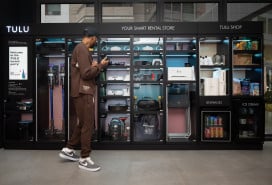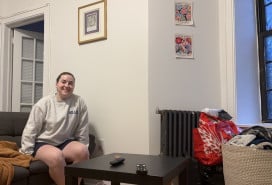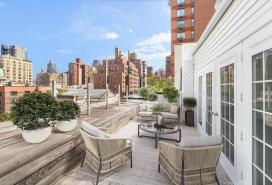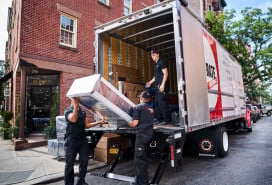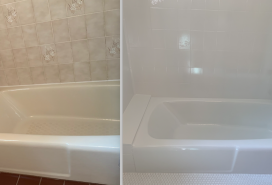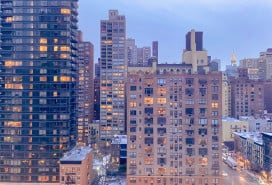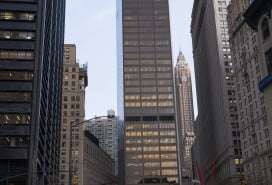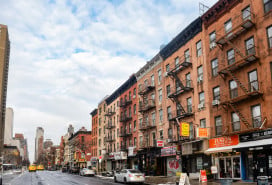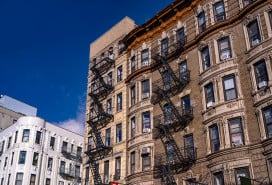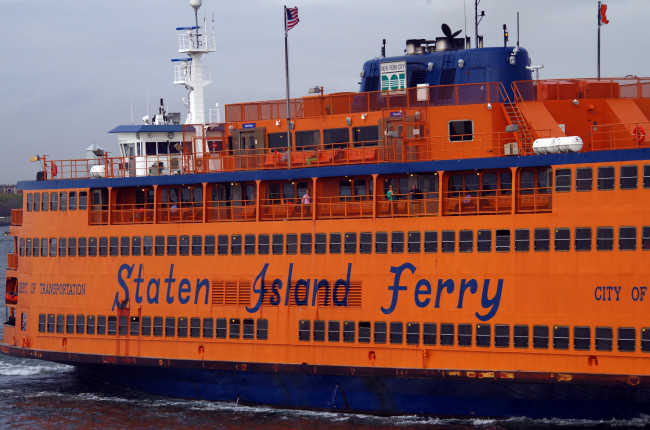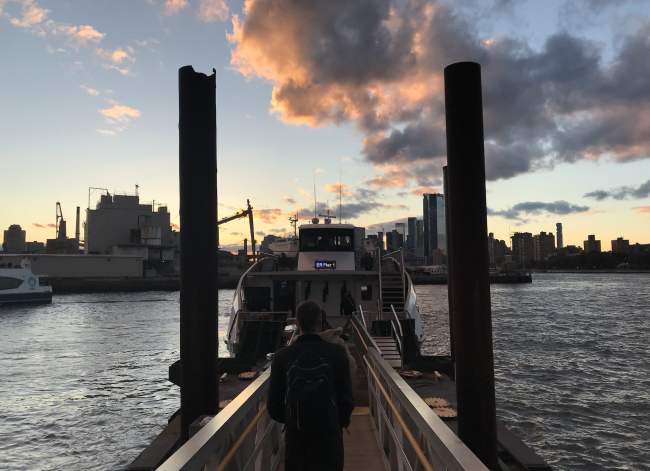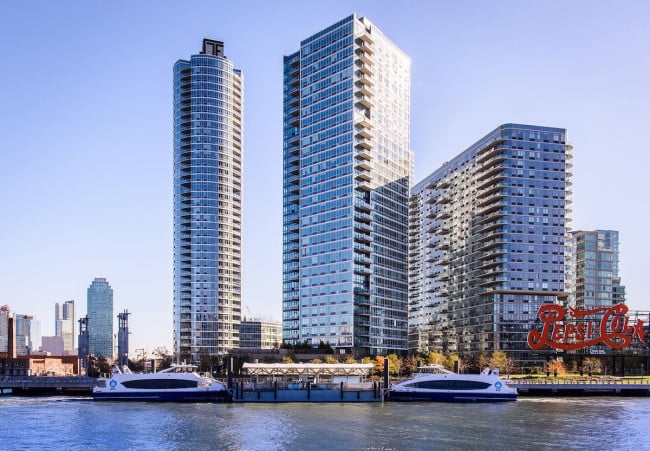Why a ferry commute probably deserves a spot on your apartment wish list
- At new developments on the waterfront, residents can skip the subway and take a ferry instead
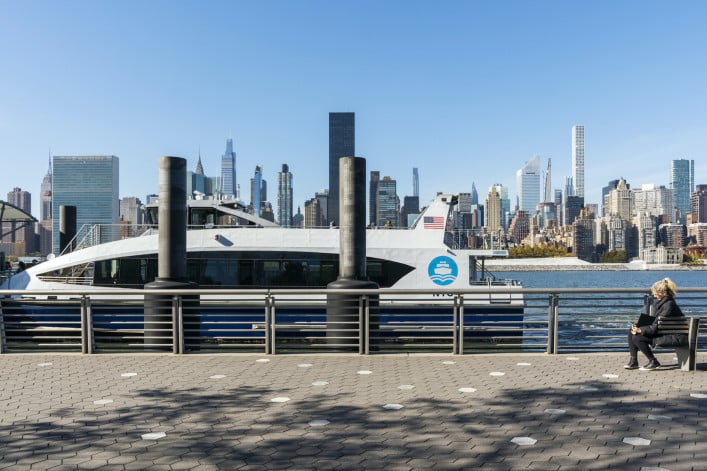
A NYC Ferry boat seen from the Hunter's Point South ferry landing.
TF Cornerstone
If you’re searching for a new place to live in New York City and know you’ll be commuting to Manhattan, consider putting proximity to a ferry landing near the top of your apartment wish list.
Traveling by ferry is decidedly more picturesque than riding the subway or bus. You get the sights and sounds of being on the water, dramatic views of the NYC skyline, plus fewer close encounters with fellow riders than the subway or bus—a bonus when the weather is hot and steamy.
Just ask around: Ferry riders tend to be enthusiastic about their mode of transportation in a way that subway and bus commuters are decidedly not, like this appreciation post on Reddit: “I love this system, it’s reliable, it’s inexpensive, bikes and other modes of transport are welcome. It covers so much of the city that isn’t served by subways.”
Speaking of affordability, NYC Ferry, the system owned by NYC’s Economic Development Corporation (EDC), relies on subsidies to keep ticket costs down; the subsidy is currently $8.55 per passenger, making a one-way ticket $4.50, and a 10-trip pass is $29. Discounted tickets cost $1.45 for seniors, people who have disabilities, students, and participants of the Fair Fares NYC program.
Ferry ridership on the rise
The ferry has been catching on with New Yorkers and ridership on NYC Ferry is up. The system has regular routes that serve all five boroughs, plus year-round trips to Governor’s Island and seasonal service to the Rockaways. According to an EDC survey released in October 2024, the most recent available, 2024 ridership was 8 percent higher than 2023, with a record 7.4 million boardings throughout the year. (On the other hand, 2024 annual ridership was 1.2 million for the subway and 409 million took the bus last year.)
Ferry boardings during weekday commuting hours increased by 10 percent last year, with approximately 260,000 more boardings during these times, according to the EDC.
Proposed changes for NYC Ferry
In July, the EDC announced a comprehensive evaluation of the NYC Ferry system, the first since its launch in 2017. Major route changes are proposed, as well as more stops, faster commutes, more seats, but also a reduction in the per-person subsidy.
Proposed route changes include: breaking the East River line into two routes, combining the Soundview and Rockaway routes, connecting the Staten Island route to Brooklyn and the rest of the system, and providing a one-seat ride to Midtown for the South Brooklyn route
Members of the public can provide feedback on the proposed changes by filling out a survey by Sept. 1st.
Upgrades for the St. George Ferry Terminal
Of course ferry service is nothing new to residents of Staten Island (since 1905). Approximately 16 million passengers annually ride the Staten Island Ferry, which follows a 5.2-mile route between St. George Terminal in Staten Island and the Whitehall Terminal in Lower Manhattan, according to the Department of Transportation.
Congresswoman Nicole Malliotakis recently announced $5,750,000 in federal funding for infrastructure upgrades at St. George Ferry Terminal.
“The Staten Island Ferry is an essential transportation link, connecting nearly half a million Staten Islanders to jobs, services, and opportunities across the city,” according to a statement from Malliotakis.
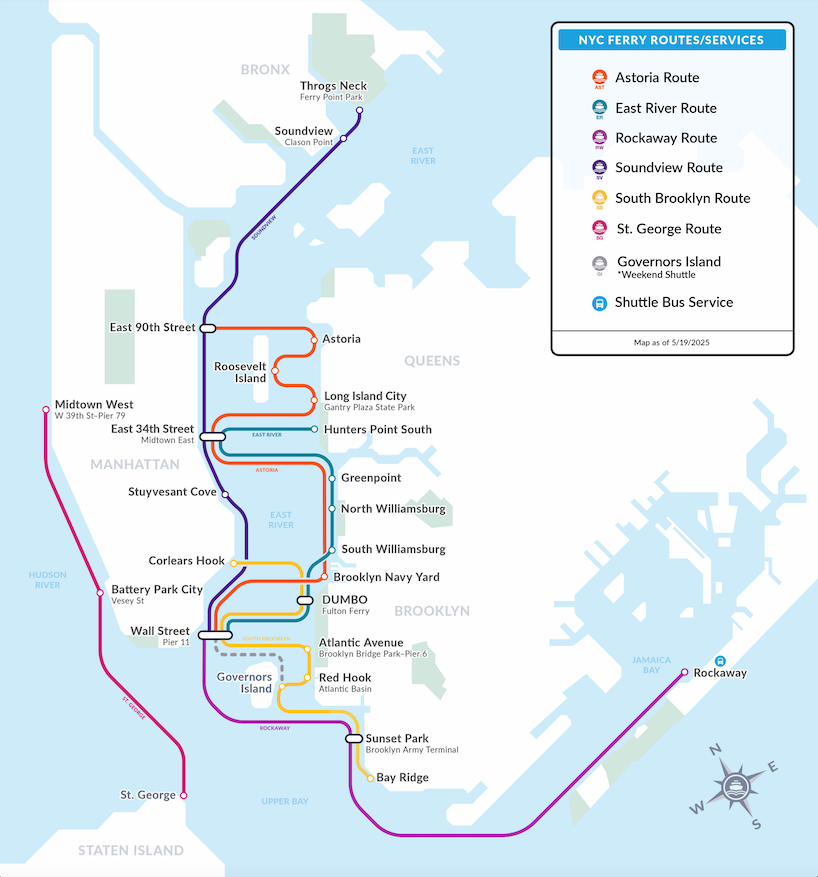
Hunting for a place near the ferry
Finding a place served by a ferry is not as easy as doing an online search for listings near a particular subway stop, which is a feature on StreetEasy. However, it can be accomplished by zeroing on the neighborhoods that have ferry stops—and then checking the address's proximity on a map. You’ll find the most listings concentrated along the East River in Queens and Brooklyn.
The number of listings mentioning the ferry has nearly doubled since NYC Ferry officially launched in 2017, though the share of all listings remains relatively small, according to Kenny Lee, economist at StreetEasy. In the six-month period from January to June 2017, 1.3 percent of rental listings and 1.9 percent of sales listings include a reference to “ferry.” From January through June 2025, 3.1 percent of rental listings and 3.8 percent of sales listings mentioned “ferry.”
From the first half of last year to the first half of this year, the share of searches for rentals listings citing “ferry” increased 161 percent but it’s still a very small share of total searches, Lee said.
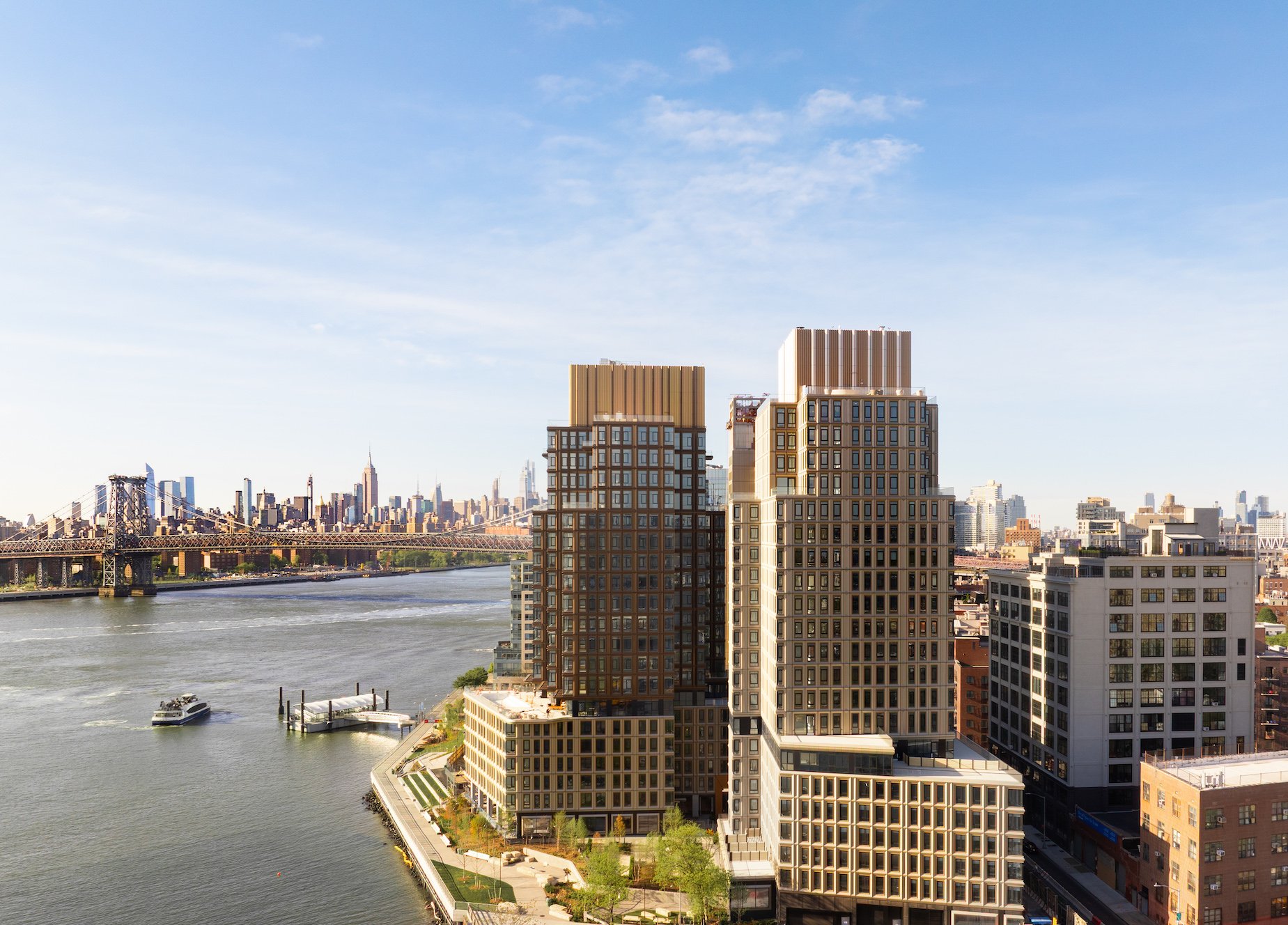
Antidote to city life
David Maundrell is the executive vice president for new development at Corcoran. He and his firm represent leasing for Two and Three Williamsburg Wharf, which was developed by Naftali Group. The five-tower development, located at 470 Kent Ave., launched sales for its first condo tower, One Williamsburg Wharf, in late 2024, followed by leasing for the project’s first two rental towers earlier this year. The project is seeing strong demand, thanks in part to the nearby South Williamsburg Ferry Terminal, he said.
The towers for Two and Three Williamsburg Wharf have 334 rental units total and rents start at $3,500 for a studio. The development’s amenities include a roof-level pool deck that transforms into a skating rink in the winter, indoor-outdoor fitness center, co-working lounges, and juice bar.
Maundrell, who grew up in Williamsburg when it was still largely cut off from its waterfront, noted that New Yorkers “will pay higher prices to live on the water.” They’re not just coming for the views. The light and peace you find at the waterfront are antidotes to hectic, urban lifestyles, he added.
The South Williamsburg Ferry Terminal is at the edge of Williamsburg Wharf’s property line.
“When we first opened the building many Williamsburg residents were interested in the property. These people understand what Williamsburg is about and were excited to move farther south,” to get away from the crowded weekend scene by a couple blocks, Maundrell said. Now the project is drawing interest from other parts of Brooklyn, Manhattan, and abroad, he added.
Maundrell said he’d like to see the city scale up the vessels to meet demand: While the South Williamsburg ferry landing is “lot less crowded than North Williamsburg and Greenpoint,” larger boats would be helpful for weekend travelers, he said.
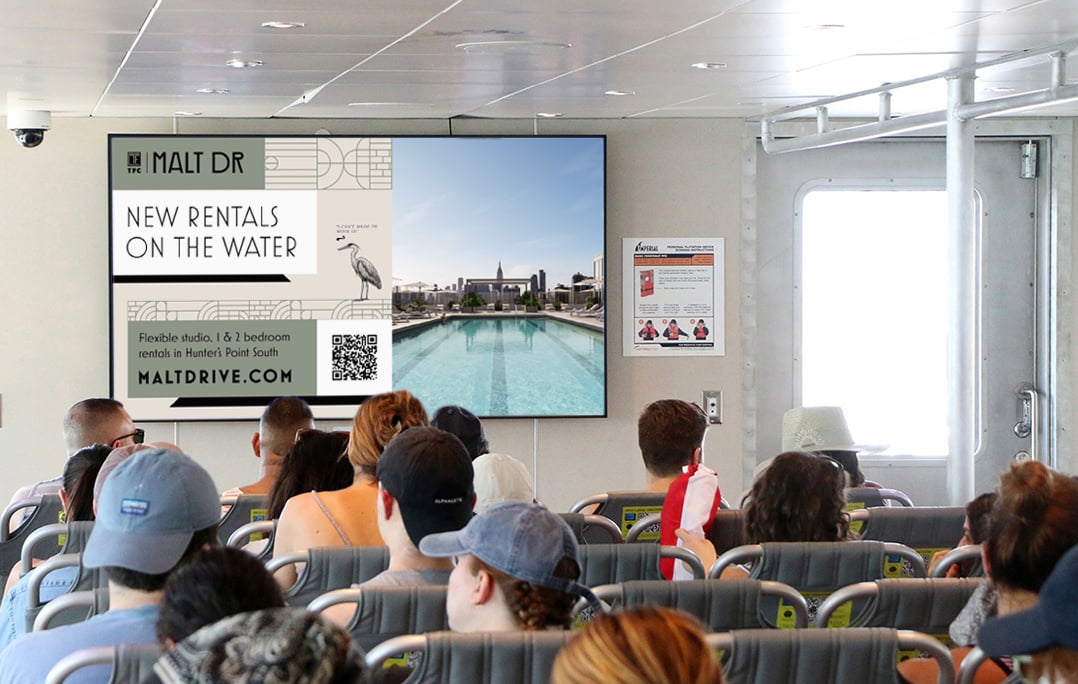
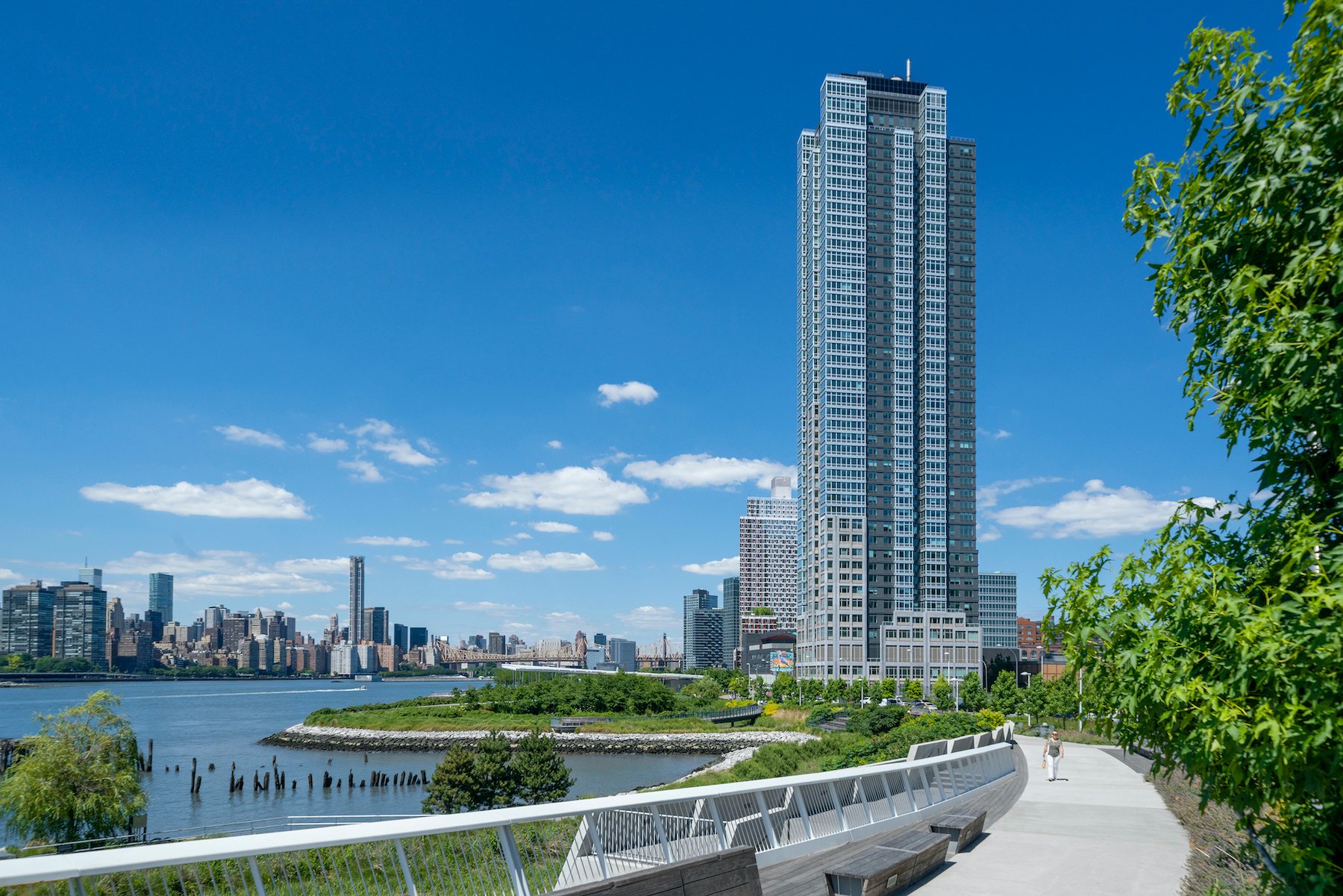
‘A pleasant discovery’
Malt Drive, developed by TF Cornerstone, is another new waterfront development that is located at two adjacent sites at 2-20 and 2-21 Malt Dr. in Hunter’s Point South. On the south side of the street, 2-20 Malt Dr. has 575 rental units and across the street, 2-21 Malt Dr. has two towers with rental 811 units.
Amenities include an outdoor swimming pool, fitness center, landscaped roof decks, co-working spaces, and children’s play area. Rents for studios start at $3,635, one bedrooms at $4,560, and two bedrooms at $6,265.
At nearby Hunters Point South Park there is programming like waterfront dance classes and gardening. The Queens Landing Boathouse and Environmental Center, which has a boat launch next to Malt Drive, offers kayaking on the East River.
“Having grown up in NYC, that’s something I never would have thought to do,” said Zoe Elghanayan, principal and senior vice president at TFC.
She said almost 40 percent of current Malt Drive tenants work in Midtown Manhattan, which is served by two NYC Ferry routes. Malt Drive is less than two blocks from the Hunter's Point South ferry landing. “Closer than the subway,” Elghanayan said.
Still, she said, “I don’t know that the ferry is really bringing people to Malt Drive or other locations” near ferry landings. Instead, she said, “it is a pleasant discovery when they’re getting to know the neighborhood,” she added.
But she said waterfront living is the draw at Malt Drive.
Elghanayan noted that 30 percent of Malt Drive residents moved from Long Island City and many previously rented in TFC buildings there. That waterfront neighborhood has many public amenities, she pointed out.
Outdoor and cultural destinations include the 12-acre Gantry Plaza State Park, Socrates Sculpture Park, and The Noguchi Museum. The neighborhood is served by the Gantry Plaza Ferry Terminal.
Long Island City “really blew up in the last five years and is only going to get bigger,” she said.
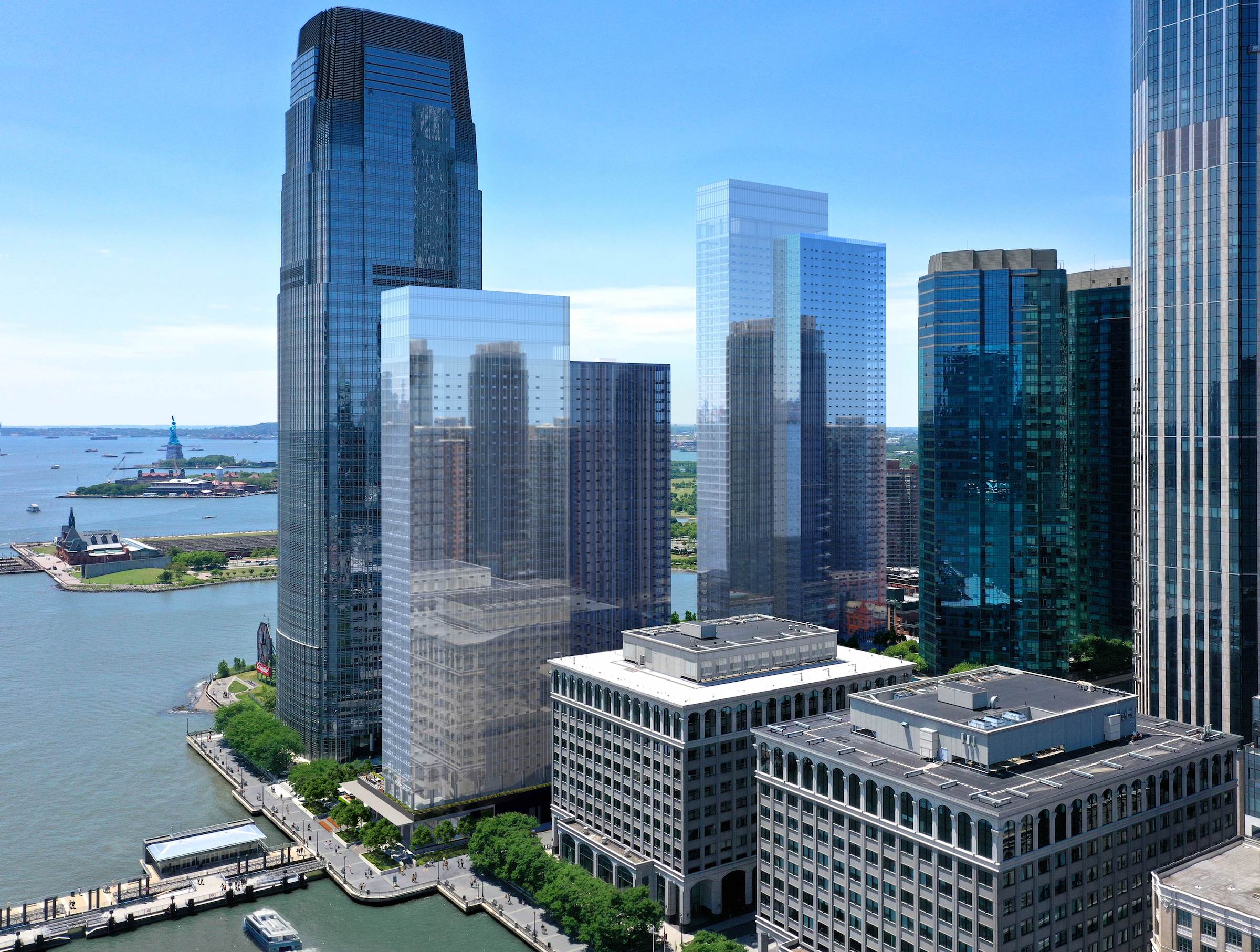
Expanding the search to New Jersey
Apartment hunters can also cast a wider net by expanding their search to New Jersey, which is served by multiple ferry systems. NY Waterway has three routes serving multiple stops in New Jersey, plus one route to Ossining, New York. Seastreak takes commuters from Belford, Highlands and Atlantic Highlands, NJ, to West 39th Street, Brookfield Place, Wall Street and East 35th Street. Liberty Landing Ferry has service between Jersey City and Brookfield Place Terminal.
The Jersey waterfront is getting a very large new development with easy access to the ferry. Two towers at 50 and 55 Hudson St. in Jersey City will add nearly 3,000 total units when completed. The sites are adjacent to the Paulus Hook Ferry Terminal.
The first phase, 55 Hudson, will be a 58-story, 1,017-unit mixed-use development with 60,000 square feet of retail space. That project broke ground at the end of 2023 and is expected to open in early 2027. The second phase is 50 Hudson, a 40-story, 924-unit tower that will include 1,941 apartments and 70,000 square feet of retail space.
The project’s developer, Tishman Speyer, is also building a public plaza on the waterfront.
“We designed 50 and 55 Hudson to maximize the spectacular waterfront and harbor views from nearly every apartment in the community,” said Erik Rose, senior managing director at Tishman Speyer. “We also strategically set 50 Hudson back on its site,” to create a public plaza that connects to the Jersey City waterfront promenade.
Rose noted that New Jersey ferry commuters are treated to “iconic views” of the Manhattan skyline, the Statue of Liberty, and Liberty Harbor.
Think about that the next time your train is stuck underground or your bus is stopped in traffic.




